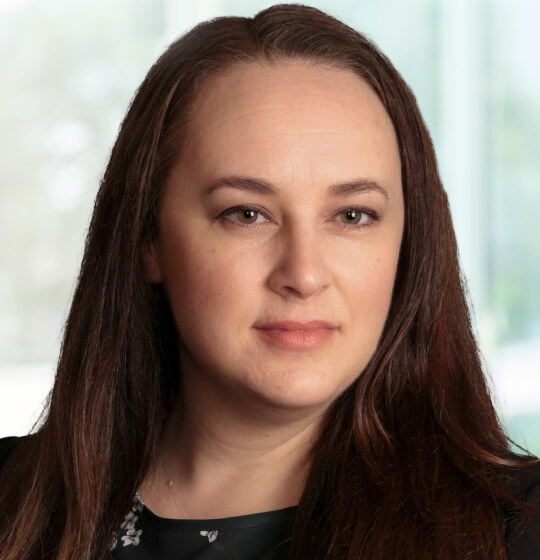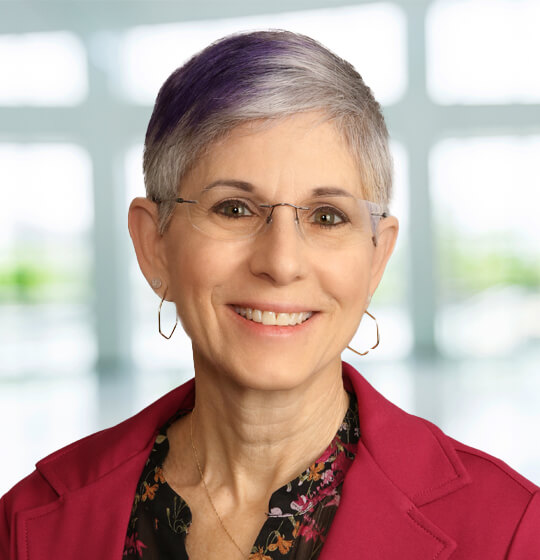Within days, California employers may have to provide employees with even more COVID-19–related paid leave. On March 18, 2021, the California Legislature passed Senate Bill 95, which creates new Labor Code Section 248.2 and Labor Code Section 248.3. These new Labor Code sections provide covered employees and in-home supportive service providers with up to 80 new hours of COVID-19 supplemental paid sick leave. As explained below, the bill is far more expansive than the California COVID-19 supplemental paid sick leave statute that expired on December 31, 2020. The new legislation covers more employers and requires paid sick leave for many more reasons. If Governor Newsom signs SB 95, the law will take effect 10 days later and expire on September 30, 2021, unless extended.
More Covered Employers
All “covered employers” must provide the new California COVID-19 supplemental paid sick leave (SPSL). Although California’s previous COVID-19 SPSL statute applied only to employers with 500 or more employees, new Labor Code Section 248.2 applies to many more employers because it defines “covered employer” as any business “with more than 25 employees.”
Covered Employees
All “covered employees” are entitled to take COVID-19 SPSL. A “covered employee” is any employee “who [is] unable to work or telework” for a covered employer for one of the reasons the statute lists.
SB 95 also creates Labor Code Section 248.3. This section applies to “providers” who provide in-home supportive services as defined under the California Welfare and Institutions Code and who provide “authorized in-home supportive services … to an eligible recipient.”
More Reasons Employees Can Take COVID-19 SPSL
SB 95 also allows covered employees to take COVID-19 SPSL for more reasons than they could under the 2020 SPSL statute. Covered employees may take COVID-19 SPSL if they are unable to work or telework, and providers may take COVID-19 SPSL if they are unable to work due to any of the following reasons.
- The covered employee or provider “is subject to a quarantine or isolation period related to COVID-19” as defined by an order or guidelines of the California Department of Public Health, the U.S. Centers for Disease Control and Prevention, “or a local health officer who has jurisdiction over the workplace.”
- A health care provider has advised the covered employee or provider to self-quarantine because of COVID-19–related concerns.
- The covered employee or provider “is attending an appointment to receive” a COVID-19 vaccine.
- The covered employee or provider “is experiencing symptoms related to a COVID-19 vaccine that prevent the employee from being able to work or telework.”
- The covered employee or provider is experiencing COVID-19 symptoms and is seeking a medical diagnosis.
- “The covered employee is caring for a family member … who is subject to an order or guidelines described” in qualifying reason (1), or who a health care provider has advised to self-quarantine, as described in qualifying reason (2), SB 95 defines family members to include the employee’s spouse, registered domestic partner, parent (including parents-in-law), child (regardless of age or dependency), grandparent, grandchild, and sibling.
- The covered employee or provider “is caring for a child … whose school or place of care is closed or otherwise unavailable for reasons related to COVID-19 on the premises.”
Amount of SPSL
Generally, full time employees are entitled to 80 hours of COVID-19 SPSL, while part-time employees are entitled to an amount of COVID-19 SPSL correlating with the number of hours the employee regularly works over 2 weeks.
A covered employee is full time and entitled to 80 hours of COVID-19 SPSL if: (1) “[t]he employer considers the covered employee to work full time”; or (2) “[t]he covered employee worked or was scheduled to work, on average, at least 40 hours per week for the employer in the two weeks preceding the date the covered employee took COVID-19 supplemental paid sick leave.”
A covered employee who does not meet the full-time employee definition above (and who is not a “firefighter,” as defined below) is entitled to COVID-19 SPSL as follows:
- “If the covered employee has a normal weekly schedule, the total number of hours the covered employee is normally scheduled to work for the employer over two weeks.”
- “If the covered employee works a variable number of hours, 14 times the average number of hours the covered employee worked each day for the employer in the six months preceding the date the covered employee took COVID-19 supplemental paid sick leave. If the covered employee has worked for the employer over a period of fewer than six months but more than 14 days, this calculation shall instead be made over the entire period the covered employee has worked for the employer.”
- “If the covered employee works a variable number of hours and has worked for the employer over a period of 14 days or fewer, the total number of hours the covered employee has worked for that employer.”
SPSL Is in Addition to Regular Paid Sick Leave
The 80 COVID-19 SPSL hours are in addition to the paid sick leave that an employer must provide and to which the covered employee or provider already is entitled under Labor Code Section 246 (the Healthy Workplaces, Healthy Families Act of 2014).
Retroactive Use of SPSL to January 1, 2021
SB 95 makes COVID-19 SPSL retroactive to January 1, 2021. This means that an employee can use COVID-19 SPSL for any absence since January 1, 2021, that falls within a covered reason. For example, if an employee took unpaid leave in January 2021 to care for a quarantined family member, the employee can ask for, and the employer must pay, COVID-19 SPSL for those unpaid absences. Similarly, if an employee took paid vacation in February 2021 because he or she was experiencing COVID-19 symptoms and waiting for a medical diagnosis, the employee could ask for and the employer would have to pay COVID-19 SPSL for those days and replenish the employee’s vacation bank.
Employers must provide retroactive payment for qualifying leave taken since January 1, 2021, once the employee makes an oral or written request for such payment. Employers must make this payment on or before the payday for the next full pay period after the employee makes the oral or written request. The employee’s wage statement must separately list the payment and reflect the hours available, rate of pay, and corresponding COVID-19 SPSL wages.
Crediting Leave Paid for Covered Absences Taken Since January 1, 2021
Excluding regular paid sick leave (PSL), the bill authorizes an employer to credit towards COVID-19 SPSL the hours of other paid leave the employer provided to employees on or after January 1, 2021, for absences taken for the same COVID-19–related reasons as those contained in the bill. For example, if an employer already extended and the employee used 3 hours of leave taken under the Families First Coronavirus Response Act (FFCRA) on or after January 1, 2021, a full-time employee would be entitled to 77, not 80, hours of COVID-19 SPSL. Employers may not credit paid leave they provided employees for COVID-19–related reasons in 2020.
For in-home supportive services providers (under Labor Code Section 248.3) added to the above rules, the amount of COVID-19 SPSL provided “is in addition to any unused sick leave benefits put in place by the federal Family First Coronavirus Response Act (Public Law 116-127), which a provider may still use until March 31, 2021.” [Emphasis added.]
Firefighters
The new law implements special rules for firefighters. “[A] covered employee who is a firefighter who was scheduled to work more than 80 hours for the employer in the two weeks preceding the date the covered employee took COVID-19 supplemental paid sick leave is entitled to an amount of COVID-19 supplemental paid sick leave equal to the total number of hours that the covered employee was scheduled to work for the employer in those two preceding weeks.”
Payment for COVID-19 SPSL
SB 95 explains how employers should calculate COVID-19 SPSL wages for nonexempt covered employees. According to the statute, employers must pay each hour of COVID-19 SPSL for nonexempt employees at the higher of:
- the employee’s “regular rate of pay for the workweek in which” COVID-19 SPSL was taken, regardless of whether the employee worked overtime in that workweek;
- “the covered employee’s total wages, not including overtime premium pay, [divided] by the employee’s total hours worked in the full pay periods of the prior 90 days of employment”;
- the California minimum wage; or
- the local minimum wage.
SB 95 requires that employers calculate COVID-19 SPSL for exempt covered employees in the same way as they calculate wages for other forms of paid leave time for exempt employees.
SB 95 caps COVID-19 SPSL wages at $511 per day and $5,110 in the aggregate for each covered employee.
Prohibition on Forcing Employees to Use Other Leave First
An employer may not force covered employees to use any other form of paid or unpaid leave or time off, including company-provided sick leave, vacation, or paid time off (PTO), before using COVID-19 SPSL. Instead, SB 95 authorizes employees to choose the number of COVID-19 SPSL hours to use, and when, up to the number of COVID-19 SPSL hours for which the employees are eligible.
Use of COVID-19 SPSL Before Entitlement to ETS Pay
Although generally the employee may select when he or she uses COVID-19 SPSL, the employer nevertheless can require that an employee exhaust COVID-19 SPSL before the employer pays exclusion pay under the California Division of Occupational Safety and Health (Cal/OSHA) COVID-19 Emergency Temporary Standards (ETS). Currently, employers must pay exclusion pay if they exclude an employee who tests positive during the infectious period or an employee has close contact with a positive individual and either situation is work-related.
Wage Statement Requirements
Just as with last year’s COVID-19 SPSL, an employer must list the amount of an employee’s available COVID-19 SPSL on the employee’s wage statement as a distinct line item. The employer must list available COVID-19 SPSL separately from any other available paid sick leave or paid time off. The wage statement requirement becomes effective the first full pay period after the statute’s effective date.
Posting and Notice
Covered employers must post a notice of the COVID-19 SPSL requirements in a conspicuous place in the workplace. The labor commissioner is to make available a model notice within seven days of the statute’s enactment. “[I]f an employer’s covered employees do not frequent a workplace, the employer may satisfy the notice requirement … by disseminating notice through electronic means,” such as email.
Enforcement of COVID-19 SPSL
The bill requires the labor commissioner to enforce COVID-19 SPSL in the same manner in which it enforces “paid sick days,” “paid sick leave,” or “sick leave” under existing law.
Potential Compliance Steps
Employers may wish to consider taking the following steps to ensure compliance with the new law.
- Educate and train human resources and payroll employees about the new COVID-19 SPSL. Employers may want to include in the training COVID-19 SPSL’s impact on the California Division of Occupational Safety and Health (DOSH or Cal/OSHA) emergency temporary standard (ETS) exclusion pay, as well as the requirement that the employer replenish vacation, sick leave, and PTO banks for leave taken since January 1, 2021, for a covered reason.
- Direct payroll employees and the information technology (IT) staff to create or reinstate a separate COVID-19 SPSL designation on wage statements.
- Watch for and post and/or electronically distribute the COVID-19 SPSL model notice that the labor commissioner issues.
The new California COVID-19 leave law and the leave laws in other jurisdictions, as well as workplace policies and employment practices to comply with and administer a large variety of employee leaves in all 50 states, are provided in the OD Comply: State Leave Laws subscription materials, which are updated and provided to OD Comply subscribers as the law changes.
Ogletree Deakins will continue to monitor and report on developments with respect to the COVID-19 pandemic and will post updates in the firm’s Coronavirus (COVID-19) Resource Center as additional information becomes available. For more information on California’s new leave law, please join us for our upcoming webinar, “California’s Brand New COVID-19 Supplemental Paid Sick Leave Law,” which will take place on Friday, March 26, 2021, from 11:00 a.m. to 12:00 noon Pacific. The speakers, Charles L. Thompson, IV, Leslie E. Wallis, and Jennifer P. Suberlak, will cover the new law’s requirements and its impact on other types of leave, including regular paid sick leave, vacation, paid time off (PTO), and exclusion leave and pay obligations under the California Division of Occupational Safety and Health’s (Cal/OSHA) COVID-19 Emergency Temporary Standards. Register here. Important information for employers is also available via podcast programs.









